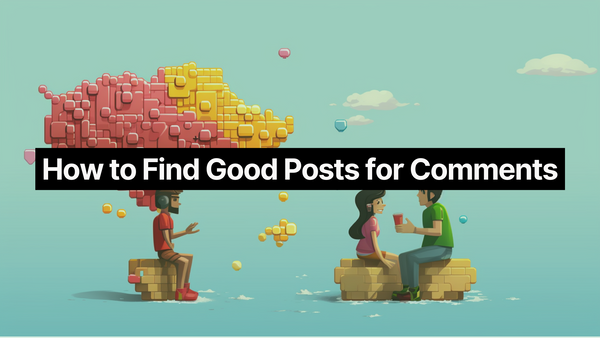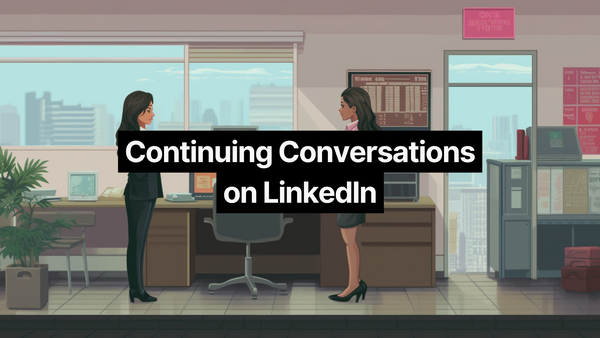Summary
May the 4th be with you!
- Sellers make the mistake of treating LinkedIn like any other channel. It requires a different approach – one that differentiates between buyers, their preferences, and stage in the buyer's journey.
- The real Jedi Mind trick happens when you Obey Vampire Sales: don't pitch unless invited.
- There are two key messaging styles that top-performing reps use when going direct: Learning & Development and Passion.
- Direct is just one of the many tools at your disposal to use LinkedIn to its fullest power. Don't forget about using comments, content, and events to your advantage.
"You must unlearn what you already have learned."
Ah, Yoda. A classic quote from our little green friend in The Empire Strikes Back, and appropriate for today's topic.
The main mistake I see is sellers treat LinkedIn as-if it was any other sales channel. Got a phone? I'll cold call you. Got an email address? I'll cold email you. Got a LinkedIn profile? I'll cold DM you.
Starting with a pitch is a mistake. It's time to unlearn it because:
- It treats all buyers the same
- It doesn't match buyer preferences on how they use LinkedIn
- It misunderstands the standard buyer's journey
It treats all buyers the same.
If you're starting with a pitch, it treats all buyers the same. They're just another person on the list and it's your job to go fish for interested buyers.
One thing we've learned from recent in-house research we conducted is that buyers usually fall into 3 different categories of profiles on LinkedIn: (1) the company profile, (2) the product profile, (3) the personal brand profile. Each of these profiles indicate a certain approach the buyer takes to LinkedIn.
The company profile simply reshares company content and has a profile that reads like a resume, while the product profile shares a lot of content about the product and reads like a pitch. Consider the buyer behind both of these profiles: the buyer with a product profile is probably more ready to engage in the comments on their own posts, whereas the buyer with a the company profile is probably more ready to engage in the DMs.
Even these subtle differences mean opening up with a cold pitch is not the right approach for every buyer.
Learn more about how to use these profile types in your research in Episode 171.
It doesn't match buyer preferences on how they use LinkedIn.
The #1 thing we hear from the VPs and C-Suite executives we work with is: "I log in to LinkedIn to learn and engage with my peers." Opening up with a pitch is an easy way to turn off buyers, because it doesn't match with the way they want to use LinkedIn.
Think about it – LinkedIn is a digital networking platform. People want to use it in the same way they might use a trade conference: meet cool people, learn something from the speakers, and grow in their career when possible. Assuming that the best opening path to a buyer is a pitch simply ignores their preferences. It's a quick way to get ignored.
It misunderstands the standard buyer's journey.
Most buyers follow a fairly straightforward path from (1) student to (2) prospect to (3) buyer to (4) power user.
The general rule is that ~3% of your market is actually "in-market" (or #3, a buyer) at any one time. I've previously called these Princess Leia prospects. "Help me Obi-Wan Kenobi, you're my only hope!" A well-crafted message is useful to break through the noise and reach those buyers who are ready for their problem to be solved.
But on LinkedIn, 90% of buyers are in the (1) student category. They are still learning about their pains and problems. They are still learning about industry categories. They are still learning about solutions to their problems.
Opening with a pitch assumes that the buyer is actually... well, a buyer. Or at the very least a prospect (someone who is aware of their problem but not yet all of the solutions available). That's simply not the case by the numbers.
The Vampire Sales Rule
So what do you do instead? Obey Vampire Sales.
In folklore, vampires are not allowed in your home unless they are invited in. The same applies to your pitch.
This is a Jedi Mind Trick, basically. You earn the right to pitch.
Think about this: if you're never allowed to pitch unless invited by the buyer, how would that change the way you use LinkedIn? Consider these two approaches.
Approach #1: The Standard Approach
I might use an automation tool to do this at scale, but I'm at least writing a succinct pain-based message to prospects and sending it out in a connection request, DM, or InMail. Even if my profile is strong, I'm going to get ignored by 97% of buyers because they're not yet buyers. If I'm lucky, a few of the remaining 3% will respond but even if they book meetings, chances are most will not close anytime soon. (I say this because I see this all the time – meetings, no revenue)
Approach #2: The Vampire Sales Approach
I identify prospects who are using LinkedIn regularly and then match their preferences with my approach. Maybe I find a tidbit about their passion for AI in their about section, so I lead with a message about AI trends (see below). Maybe I see they're posting a lot of content, so I jump into their comments and drop an insightful or curious or fun comment every time they post.
Maybe I even send a connection request, but instead of pitching, I lead with a message about their learning & development (see below). I have a conversation for as long as it takes. I get to know them more and I lean into a regular, human conversation like you would at a networking event. Probably for weeks!
But I never, ever pitch until they say: "Alright Morgan, so what do you do?"
Imagine the power and credibility you have once they ask you that. You will be strong in The Force.
Two Key Messaging Styles
The key insight we've learned is that top performing reps that use LinkedIn lead with one of two messaging styles:
- The Learning & Development Style
- The Passion Style
The Learning & Development Style
Leading with this style assumes that the buyer is actually in the (1) student stage of the buying process. They're on LinkedIn to learn and engage, not to be sold. So how do you do an opening salvo? Lots of ways, but here's one example I use a lot:
- Read 10-15 job descriptions for their exact job title. What do they need to know to be successful? Are they following influencers who are helping with that? What are the potential gaps in their knowledge? What market trends are changing the industry that they're trying to catch up on?
- Are they engaging with influencers on platform? Comments, not likes, indicate that there is a strong link with a specific thought leader.
- If they are commenting, respond to their comments for a conversation starter.
- If they aren't, send a message that goes something like: "Hey Morgan- got a question... I was talking with a few marketing leaders last week and everyone seems to be struggling with {x}. Do you have any fave resources I might be able to share with them? Thought to ask since you're active out here, following folks like {influencer}, and have a bunch of experience in your field."
The strength of this approach relies on a strong profile that isn't sales-y at all. If you appear like a salesperson, this approach will feel fake and the ensuing conversation un-earned.
The Passion Style
I'm kickstarting conversations by identifying a shared passion – something I can have a fun and worthwhile discussion on. It's a more niche opening, but it can be a super powerful one. Here's the step-by-step guide to use this style.
Engaging on LinkedIn
I've exclusively outlined just starting conversations in the DMs or with a connection request in this briefing. There's so much more you should be doing on LinkedIn. We've discussed high-level what to do on Nate Nasralla's wonderful Library of Uncommon Sales Practices (here), but also consider the following:
- 140. How to Build Pipeline on LinkedIn w/out a Personal Brand (link)
- 119. Build Your Inbound Funnel on LinkedIn (link)
- 113. How to Run a Nurture Sequence on LinkedIn (link)
- 107. How to Book a Meeting with Anyone in the Comments (link)
There's so much more to the Jedi way than just going direct :)
"Remember, concentrate on the moment. Feel, don't think. Trust your instincts."
A classic from Qui-Gon Jinn to close. Sales is partly an art – it requires good judgment. Putting these principles into practice requires, uh, practice. Just like Luke on Dagobah in The Empire Strikes Back, you won't be lifting an X-Wing out of the swamp on your first try.
Trust your instincts. You'll do great.





